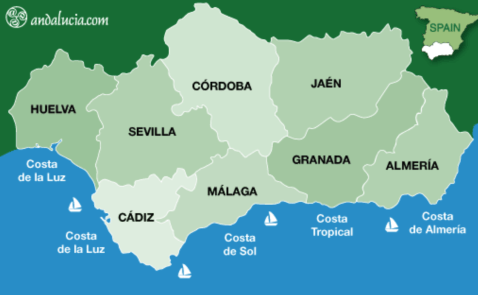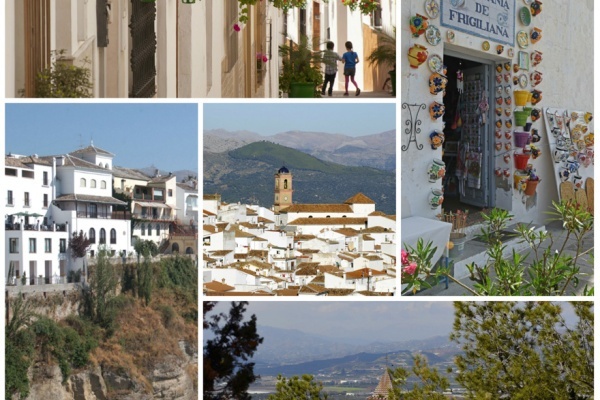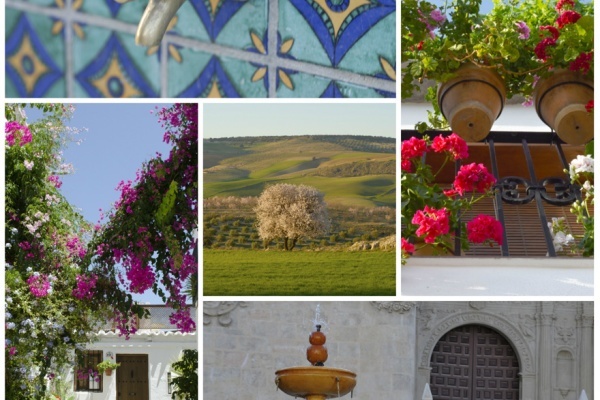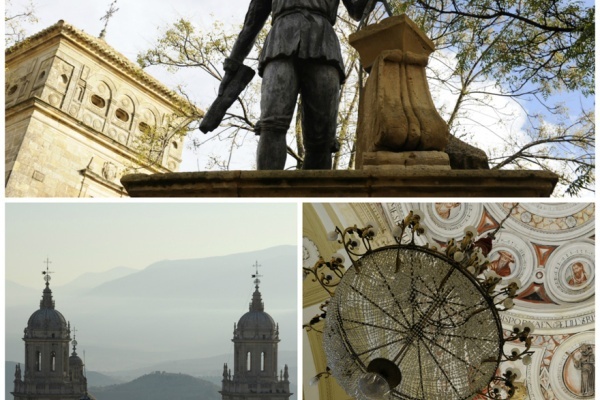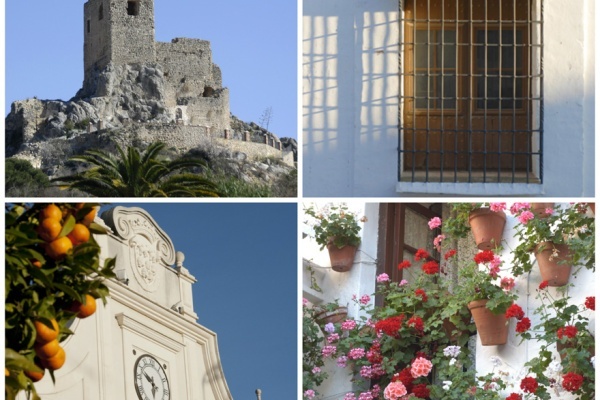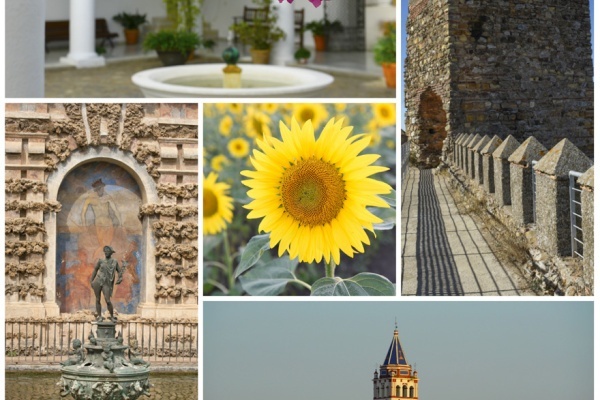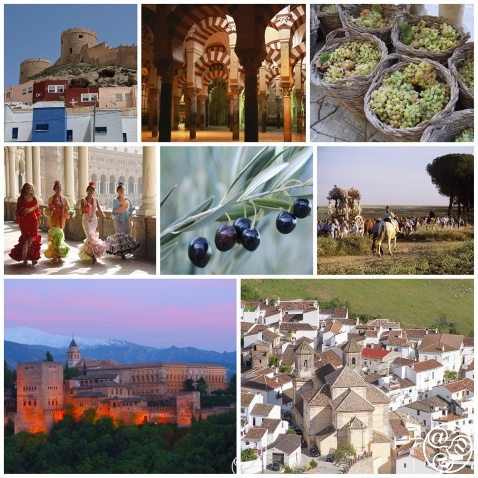
The eight provinces of Andalucia. © Michelle Chaplow |
|
Do you know in which of the 8 provinces the photos above were taken? Click here for Answer
Provinces of Andalucia
There are eight provinces in Andalucia: (from east to west) Huelva, Sevilla, Cádiz, Córdoba, Granada, Málaga, Jaén, and Almería. Each province has a capital city of the same name.
Málaga, Granada, and Almeria have a Mediterranean coastline - Costa del Sol, Costa Tropical and Costa Almeria. Cadiz province also has a stretch of Mediterranean coastline in the Campo de Gibraltar area.
Each province has a wide variety of landscapes which vary from flat coastal area, to gently rolling hills, fields planted with trees such as orange, olive and almond, and majestic snow-capped mountains (Granada, with its ski resort, Malaga and Jaen), and even semi-desert (Almeria).
Huelva is the only province with an international border - Portugal, to the west; while Seville and Córdoba are bordered by the Spanish region of Extremadura to the north; Cordoba, Granada and Jaen by Castilla La Mancha; and to the north-east, Granada and Almeria by Murcia.
Map of Provinces and Coasts
Size and government
The largest Andalucian province by both area (km2) and population is Seville, while the smallest in terms of these same criteria is Huelva.
Each province has its own government called 'Diputación Provincial', whose provincial councillors are indirectly elected by municipal councils, based on the results of municipal elections.
History of the provinces of Andalucia
The provinces were created in 1833 as part of an overall restructure of Spain, when the four kingdoms of Seville, Granada, Cordoba and Jaen were divided into eight provinces in total: Seville, Cadiz and Huelva were created in the former Seville Kingdom; and Granada, Malaga and Almeria provinces in what had been Granada Kingdom.
Some towns originally belonging to one Kingdom were absorbed into a different province. Archidona and Antequera, now in Malaga, had previously been Seville Kingdom; Grazalema and Setenil, in Cadiz, were formerly part of Granada; some towns in Murcia and La Mancha, as well as the so-called "new towns" in the Sierra Morena, became part of Jaen.
The province is a now Spanish administrative demarcation recognised in the Spanish Constitution of 1978. There are currently a total of fifty provinces in Spain and two autonomous cities of Ceuta and Melilla in North Africa.
The provinces of Andalucia, Spain
Andalucian province - ISO alpha codes
- HU = Huelva
- SE = Seville
- CO = Cordoba
- J = Jaen
- CA = Cadiz
- MA = Malaga
- GR = Granada
- AL = Almeria
Andalucian province number codes
There is also a set of two-digit Spanish province codes published by the INE (Instituto Nacional de Estadística) and used by most government departments. Correos, the Spanish postal service, also uses these numbers as the first two digits of the five-digit postal codes. The origin is an alphabetical order of the names of the provinces in Spanish.
- 04 = Almeria
- 11 = Cadiz
- 14 = Córdoba
- 18 = Granada
- 21 = Huelva
- 23 = Jaén
- 29 = Málaga
- 41 = Seville
